Singapore’s melting pot of multiculturalism seeks balance between old and new flavours
Many Singaporeans surveyed in a study agreed that multiculturalism is a core tenet of the national identity, but somewhat paradoxically, a substantial portion also said immigrants are a threat to that identity.

A strong identity creates internal cohesion, especially in very diverse populations like Singapore's. (Ilustration: CNA/Nurjannah Suhaimi)

This audio is generated by an AI tool.
What comes to mind when you think of a nation with a strong identity?
Perhaps Japan, not just for its ancient temples and bamboo forests, tea ceremonies and sushi, but also its society's deep respect for social order, harmony and politeness.
Or you might think of France for its croissants and baguettes, its distinctive films and language, the romantic vibes of Paris and the nation's overall je ne sais quoi.
What about Singapore?
As a new study by the Institute of Policy Studies (IPS) and CNA found, people here associate the nation with Singlish, multiculturalism and iconic national symbols such as the Merlion and local hawker fare.
The survey, which sought to define the Singapore identity after 60 years of nation-building, was commissioned in conjunction with the nation's 60th birthday. Findings were released on Sunday (Nov 2).
It found that nearly half (46.8 per cent) of Singaporeans and permanent residents (PRs) believe Singapore’s national identity has grown stronger over the past decade – outnumbering the 29 per cent who feel it has weakened.
But at the same time, the survey also found a paradox in respondents' attitudes: four in 10 (41.7 per cent) said that the presence of foreigners is a negative influence on the nation's identity and about 40.2 per cent also felt the same way about new citizens.
These findings seem to fly in the face of the nation’s cherished belief in multiculturalism and its history of being a melting pot of immigrants, a legacy that dates back to its role as a centuries-old crossroads for trade, long before Singapore's independence in 1965.
This tension likely exists because some Singaporeans have their own specific definition of the term "multicultural", said Dr Rebecca Grace Tan, a political science lecturer at the National University of Singapore (NUS).
"Singaporeans think of multiculturalism being 'CMIO' (Chinese, Malay, Indian and Others), with 'others' often referring to Eurasians," she said.
The CMIO framework is an administrative tool for the Singapore government to manage policies around race. Others include the Ethnic Integration Policy, which promotes social cohesion by ensuring a good racial mix in public housing estates.
Residents who don’t fit neatly within this framework, or who don’t embrace local cultural touchstones like Singlish or hawker cuisine, may be perceived as outsiders challenging the social fabric, said Dr Tan.
Moreover, economic anxieties in Singapore likely also contribute to this view of foreigners and new citizens as a threat to national identity – a trend that can be seen in many other countries around the world too, experts said.
"When people feel like it is harder to make ends meet, get jobs or progress in their careers or have social mobility, and they also see open borders and immigrants in their midst, there is a tendency to blame these newcomers," said Dr Teo Kay Key, a research fellow at IPS and one of the investigators on the CNA-IPS study.
"They are seen as competing for the limited economic resources and opportunities."
Also part of the CNA-IPS study were Dr Mathew Mathews, the head of the IPS social lab, Dr Melvin Tay, a research fellow at IPS, and Mr Benjamin Low, a research assistant at IPS.
For its part, the Singapore government has maintained its stance that Singapore should be open to attracting talent from around the world in a measured and stable way, but at the same time that these immigrants should integrate into local society.
In his first press conference after taking on the role of prime minister on Aug 23, 2024, Mr Lawrence Wong said that Singapore welcomes all who embrace its values and way of life, but there are "house rules".
"There will always be frictions from time to time that arise ... over time, as the new arrivals come in and adjust to our way of life, as their children go through our school system, and their sons do national service, they become Singaporeans like our forefathers.
"So I think this must continue to be our ethos as a society of immigrants, as a nation of immigrants, and we just have to keep on working hard at managing such integration matters," said PM Wong.
His predecessor Senior Minister Lee Hsien Loong noted earlier this year that immigration is "essential, even existential, for Singapore's survival". He added that the nation has no natural resources and relies on its people.
"We need new citizens to top up our numbers and to keep our economy growing. Because we are not having enough kids of our own, and the resident workforce is already at full employment and growing older," Mr Lee said during a citizenship ceremony in March.
He also said during a media interview last year that managing the "inherent tensions" between wanting social cohesion and bringing in immigrants was the "most difficult" issue he had to deal with during his 20-year tenure as Singapore’s third prime minister.
Indeed, experts agreed that it is a highly challenging balancing act: to strengthen national identity and ensure that local residents feel secure about jobs and housing, while being open to newcomers from around the world and at the same time managing frictions so that the nation avoids tipping into xenophobia and an exclusionary mindset.
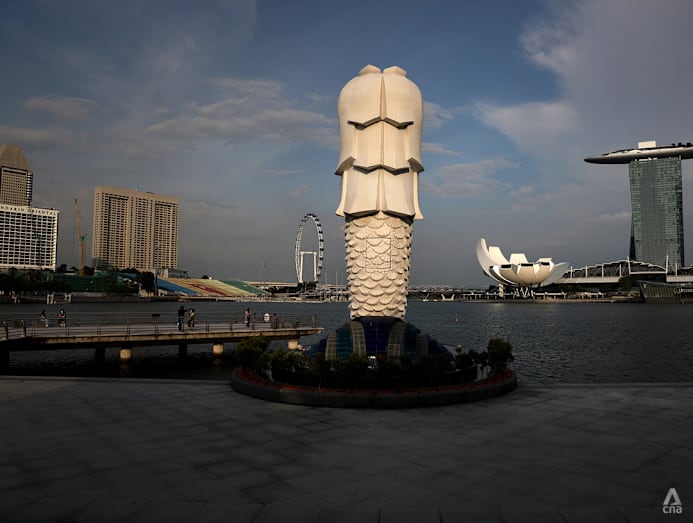
KEY FINDINGS OF THE SURVEY
While respondents felt that the Singapore identity has grown stronger over the past decade, the CNA-IPS study also found that 22 per cent believe it is very different now compared with a decade ago, while 42.9 per cent said it is somewhat different.
Respondents who agreed that Singapore has a national identity, were also asked an open-ended question about the features or attributes of this identity:
- 31.3 per cent cited the languages spoken here, including Singlish, English and mother tongues
- 30.3 per cent pointed to the multicultural make-up of Singapore society
- 14.7 per cent named symbols, such as the Merlion, the Singapore passport and Changi Airport
- 9.8 per cent talked about food, including hawker fare
- 9.2 per cent named behavioural traits such as being "kiasu", hardworking, proud and efficient.
All respondents were also asked what it meant to be Singaporean:
- 24.5 per cent said it meant having a sense of pride or belonging to Singapore
- 23.8 per cent said it was about embracing multiculturalism or multiracialism
- 17.2 per cent said it meant that one was born in and resides in Singapore
- 13.4 per cent said it was about embracing a peaceful, harmonious and safe environment
- 5.8 per cent said it meant that one speaks Singlish.
When asked why they felt Singapore's national identity differed from 10 years ago:
- 16.5 per cent of respondents pointed to an influx of foreigners and new citizens
- 14.8 per cent cited differences in values and priorities
- 10.7 per cent said global influences such as technology and cultural shifts were the cause
- 9.4 per cent cited generational divides
- 7.9 per cent pointed to diminished levels of pride and belonging.
When asked how new citizens and foreigners have impacted national identity:
- 40.4 per cent said new citizens have somewhat negatively, negatively or very negatively impacted it
- 25 per cent said they have had no impact
- 34.6 per cent said they have had a somewhat positive, positive or very positive impact
- 41.7 per cent said foreigners have somewhat negatively, negatively or very negatively impacted national identity
- 26.3 per cent said they have had no impact
- 32 per cent said they have had a somewhat positive, positive or very positive impact.
When further asked how new citizens and foreigners have affected social cohesion:
- 36 per cent said new citizens have greatly or somewhat weakened it
- 30.8 per cent said they have had no impact
- 33.2 per cent said they have greatly or somewhat strengthened it
- 34.8 per cent said foreigners have greatly or somewhat weakened it
- 39.2 per cent said they have had no impact
- 26.1 per cent said they have greatly or somewhat strengthened it
The study also showed that Singaporeans recognise that a strong national identity has its benefits:
- 95.1 per cent of respondents believe that having a national identity leads to unity
- 94.9 per cent say it leads to stability
- 91.8 per cent say it leads to success.
The study was conducted between October and November 2024, collecting responses from 2,000 Singapore citizens and PR respondents. Its findings will also be featured in Being Singaporean, a CNA documentary airing on Nov 3 and 4.
THE DOUBLE-EDGED SWORD OF A STRONG IDENTITY
A strong national identity is something that all countries around the world strive for, and for good reason, said NUS’ Dr Tan.
A strong identity creates internal cohesion, especially in very diverse populations such as Singapore's, where alternative identities might cause fragmentation
And once a diverse population coalesces around a national identity, it allows for unification, especially in dealing with external threats.
Assistant Professor Nathan Peng of Singapore Management University (SMU) said that it is not surprising that Singaporeans feel that the national identity has strengthened in the last decade.
"We are a relatively young nation where, less than 50 years ago, many might have seen themselves as temporary economic residents with their true roots elsewhere," he said.
"I am not surprised that our identity has consolidated over a period of 10 years, which is about 17 per cent of our entire history as a country."
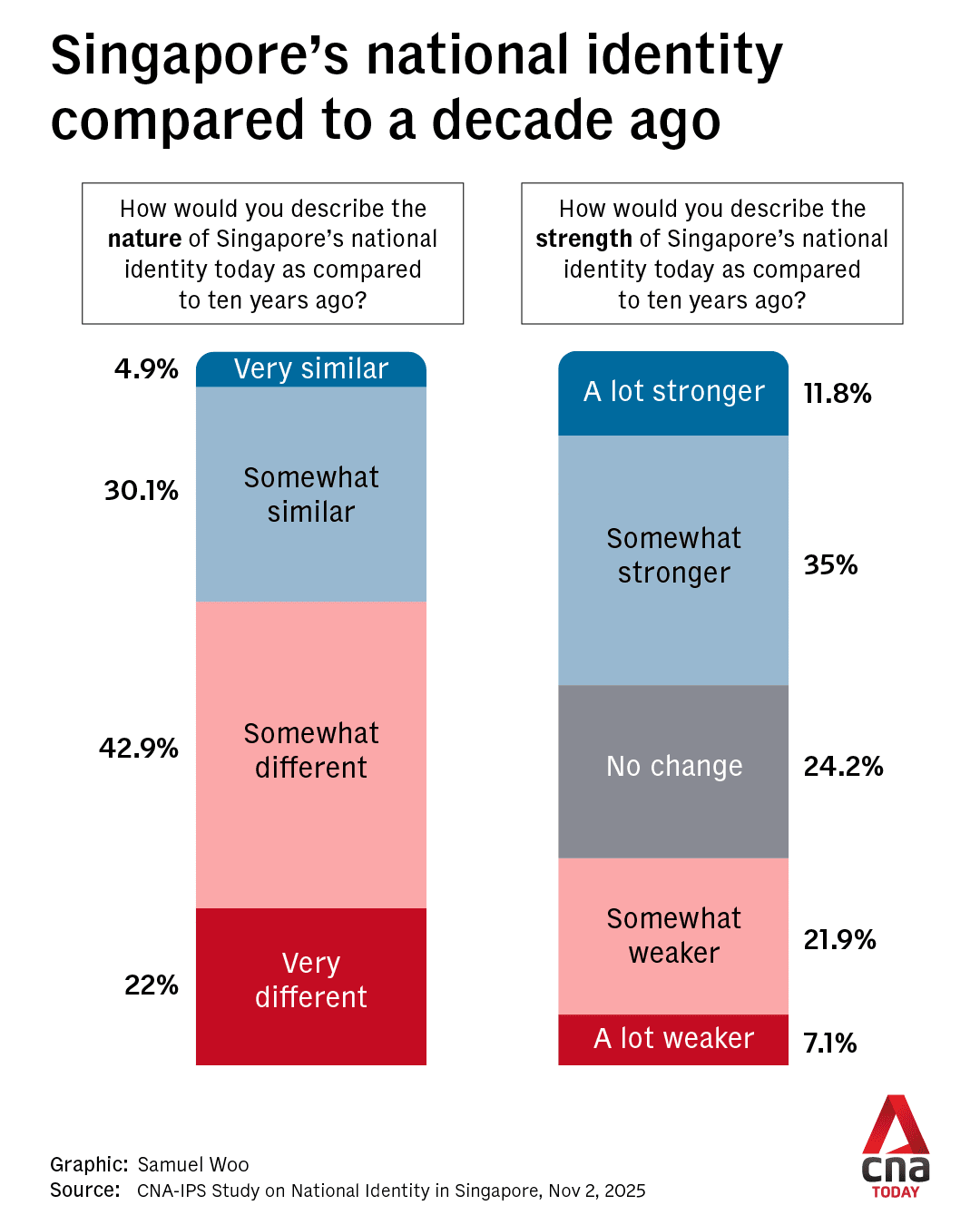
While a strong national identity is something to be celebrated, experts cautioned that it can have negative consequences if wielded wrongly.
There is potential for a national identity to become a tool for exclusion, with the justification that it needs protecting.
This potential is already being exploited elsewhere.
There have been spates of anti-immigration protests in other countries in recent months amid a worldwide shift towards right-wing politics, noted Dr Tan Ern Ser, an adjunct principal research fellow at IPS.
This rightward shift has been seen in countries such as the United States, Australia, Japan and Ireland, he added.
Beyond just protests, symbols associated with national identity, such as a country's flag, could also be used to divide people.
In Ireland, for example, right-wing activists have lined Dublin streets with the Irish flag. Supporters say the flags are a simple expression of patriotism, but opponents argue that the banners are meant to intimidate and mark areas as anti-immigrant.
In any country, if a healthy balance is not struck, patriotism can tip into nationalism – two concepts that on the surface seem similar but are in fact quite distinct, said IPS' Dr Tan.
"(Nationalism) could involve a cult or ideology that adopts exclusivity vis-à-vis other nationalities or ethnicities. However, patriotism is about a sense of belonging to and pride in the nation and (being) inclusive, or at least less inclined to exclusivity," he explained.
So far, Singapore's expressions of national identity have been safely within the realm of patriotism, he said.
Indeed, several Singaporeans told CNA TODAY that they are not opposed to foreigners coming here. Still, they do feel that foreigners have a negative impact on the national identity when they act or behave in ways that do not fit in with local norms.

"(Singaporeans) shouldn’t change to fit these people. They should change to fit Singapore," said Mr Joshua Lu, 35, who works in the IT industry.
He said he has in recent years started seeing behaviour on public transport that was not the norm 10 years ago: Commuters talking loudly on the train, sitting on the floor or barging into the train without waiting for others to alight first.
"You see (such behaviour) now all the time, and it's mostly by people who aren't local," said Mr Lu.
Housewife Katherine Lee, 57, added that she has observed some foreigners, whom she believes are new citizens or PRs, interacting only among themselves.
"Some don't try to get to know the neighbours. They keep to themselves, or others that are (from the same country) as them at the void deck, lift or playground," she said.
"It's our home, but the fact some don't try to even blend in and be part of us leaves a bad taste in my mouth."
For Mr Farhan Iqbal, 27, who works in IT, this is quite literal: He has noticed a growing number of Chinese restaurants in Singapore that do not provide menus in English, which he noted is unusual for this proudly multicultural nation and makes him feel uncomfortable.
"The menus not being in English makes me feel like I'm being excluded and it's only for people who can read Chinese, despite the fact Singapore is about being inclusive and multicultural," he said.
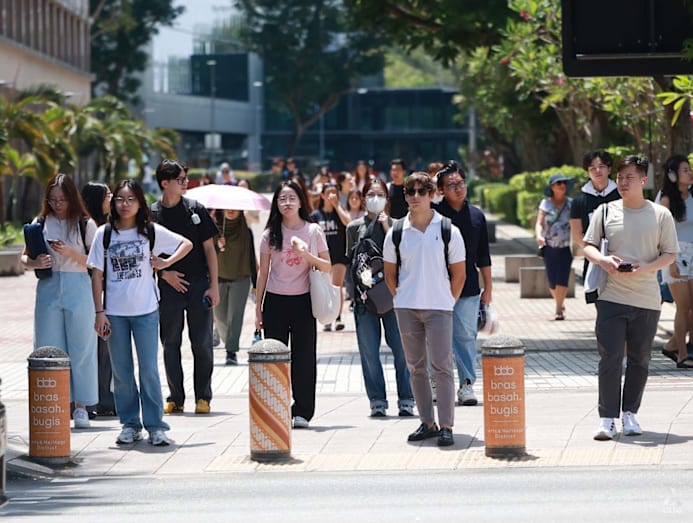
HOW K-POP, MALA ARE RESHAPING SINGAPORE
Similarly, Mr Erwin Setiawan has been noticing another food trend that has taken Singapore by storm in recent years. The 24-year-old said that every coffee shop or hawker centre he frequents now features a mala stall, which would not have been the case 10 years ago.
"I didn't know what mala was until I was studying in polytechnic a few years ago. Now it's everywhere, replacing our local foods in hawker centres and even in malls," he said.
He is not alone in feeling that global influences have changed Singapore's national identity.
The CNA-IPS study found that 14.8 per cent of respondents felt that differences in values and priorities have caused Singapore's national identity to shift, while 10.7 per cent cited global influences like cultural shifts and technology.
To 9.4 per cent of respondents, a generational divide is the main cause of Singapore's changing national identity.

Madam Tan, 78, a retiree who declined to give her full name, lamented how a confluence of these factors has affected the way young Singaporeans talk. She said that they do not use as much Singlish as older generations and instead use words and phrases that are completely unfamiliar to her.
"(My grandchildren) sometimes say Korean words from their K-pop or drama or whatever that I don't understand," she said in Mandarin. "Even the English words they use are weird. They get it all from their phones, (like on) TikTok."
Sales manager Joanne Seah, 36, agreed that global trends are increasingly shaping local habits, hence changing what it means to be Singaporean.
"A lot of youths are more into Western or Korean trends than local culture, so sometimes our own identity gets overshadowed," she said.

MULTICULTURALISM VS XENOPHOBIA
Last month, an advertisement by Chinese hotpot brand Haidilao at Stadium MRT station drew flak online for its improper use of Singlish.
Many Singaporean netizens pointed out that the ad's slogan of "Hungry sia?" was bad Singlish – the phrase does not make sense as a question in the syntax of Singlish.
Assistant Professor Luke Lu of Nanyang Technological University's School of Humanities told local media outlet The New Paper that typically, instances of misuse of Singlish draw mockery at most.
But this time around, reactions were much harsher as they were tied to broader societal issues, he noted, adding that this was likely a reflection of the current angst and anxiety over foreigners, the uncertain economy and volatile job market.
"Singlish became a convenient excuse to air other grievances," he said.
Additionally, SMU's Asst Prof Peng said, Singaporeans can be at once supportive of a multicultural national identity where culture is celebrated, while also requiring foreigners to adhere to specific practices and beliefs that Singaporeans believe define their society.
"Being open has been a key part of our success story but that same success might be also leading to a sense that we must protect certain values or ways of being for our continued prosperity."
Ms Seah, the sales manager, pointed out how this can also be seen when certain social media posts blow up. For example, a video showing a quarrel between a Singaporean and a Chinese tourist cutting a queue at Universal Studios Singapore made the rounds online in September.
"Incidents like that make Singaporeans feel that our way of life, like queuing properly, isn't respected," she said.
"It’s natural for people to feel frustrated, especially if they think jobs or culture are being affected."
But, at the same time, she said, Singaporeans should always remember that this nation was built by immigrants.
"The issue isn’t foreigners themselves – it's when integration doesn't happen. If new citizens try to blend in, like picking up Singlish or joining in our local traditions, I think most Singaporeans will accept them."
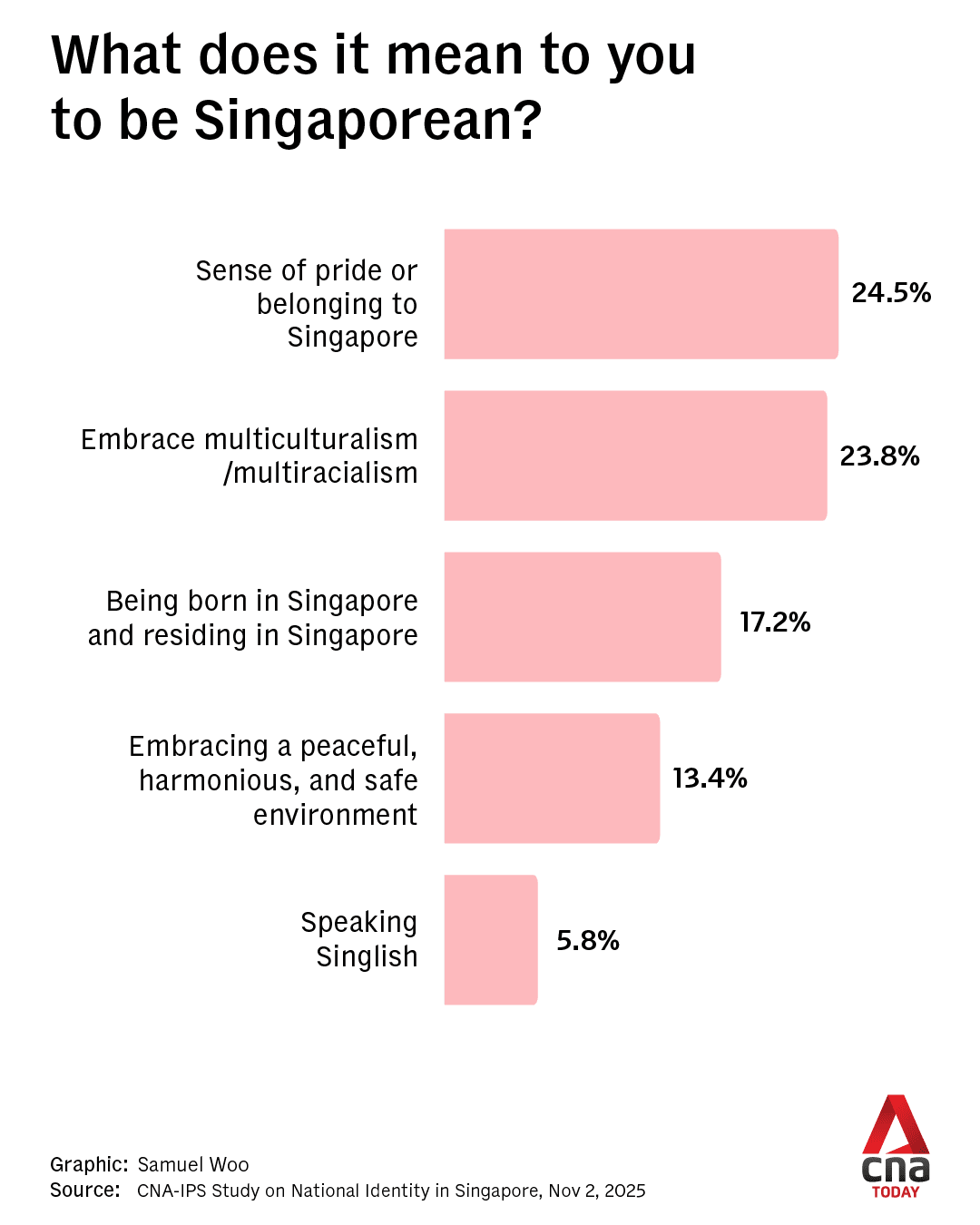
Several PRs and new citizens told CNA TODAY said their experiences have reflected as much. While they have seen an increased discomfort among Singaporeans towards foreigners who do not assimilate well, locals are welcoming to those who try to adapt.
Dr Martin John, a Singapore PR from the United Kingdom, moved to Singapore in 2003 when the SARS outbreak occurred, and has since seen the nation overcome other crises, such as the 2008 financial crisis and the COVID-19 pandemic.
Through it all, the 52-year-old osteopath and founder of Orchard Health Clinic said that he was able to find a community and build a family here because Singaporeans welcomed him with open arms.
"It's easy for expats and foreigners to stay within a bubble, and only hang out with each other. But you can't do that here – Singapore says you have to be part of us … that we welcome people who are integrated and don't live in a bubble," he said.
Dr John said he made a conscious effort to integrate by networking, making friends and getting used to Singlish. He felt that his efforts were reciprocated by Singaporeans, who invited him out and introduced him to the country.
"Back when I first moved here, Singaporeans invited me to their favorite (food haunts)," he said. "It made me feel a part of Singapore."
He later married a Singaporean, and they now have a seven-year-old son studying in a local school.
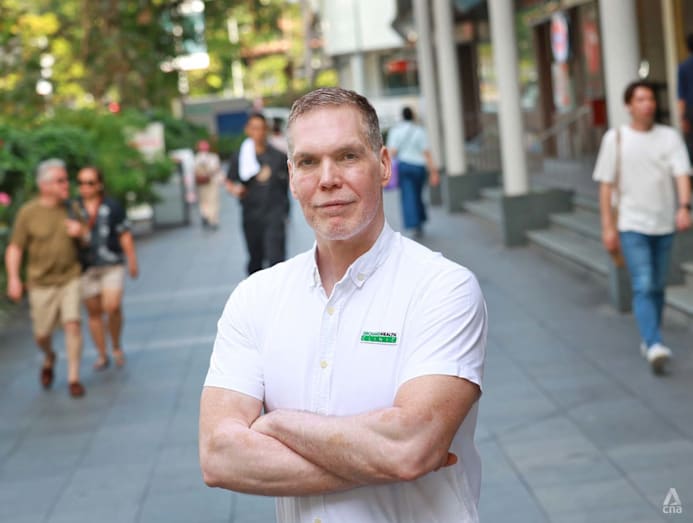
Mr Dayyan James, a New Zealander who moved to Singapore in 2011, agreed that disdain towards foreigners is usually directed at those who do not adapt to the culture and beliefs here.
"When I first moved here, the term 'foreign talent' was becoming increasingly negative … there was definitely a disdain for people who do not try to understand the culture," said the founder of scent and skincare brand CocosBotanica.
But while there are people who are racist and xenophobic online, he said these are a "small minority" and he has not encountered people who act that way in person.
"Unfortunately, there are foreigners who add ammunition by not respecting local culture," he noted.
Mr James added that Singaporeans are very friendly and that it is easy to find opportunities to make local friends. However, some foreigners may choose to stay within their own circles because of familiarity.
"But they forget that the expat crowd is transient, that everyone comes and goes," he said.
While speaking at a Chatham House session in London on Oct 27, Senior Minister Lee said that while Singapore needs its foreign population, there is a need to balance being accommodating with getting foreigners to "understand what our rules are".
He added that while Singaporeans need to be gracious towards them, foreigners too need to "comply with our rules, and there are some basic norms" to follow.
"They have to know that if you are in Singapore, please keep the bling down," he said of some foreigners.
"Do not go around popping champagne which is S$20,000 a bottle with sparklers, and do not zoom your Ferrari or Lotus or whatever down the middle of the road in the middle of the night just to let everybody know that you have arrived.
"You would not have thought that that was something you needed to tell anybody, but sometimes it is helpful to remind them."
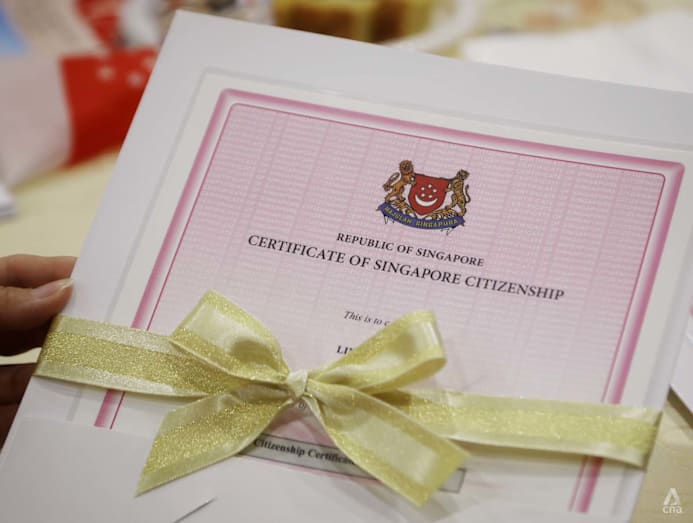
A WORK STILL IN PROGRESS
During the same panel, Mr Lee also spoke about the national identity, saying that Singaporeans hold a "certain identity which is emerging", which is important as it allows others to identify them as being from Singapore, regardless of race.
"If you lose that because there is some influence operation, or you have some bot network which has persuaded you that you should be standing on one side or the other, well, then you are gravely compromised," he said.
Still, in a globalised and highly interconnected world, it is inevitable that Singapore’s national identity will continue evolving, said Dr Tan Ern Ser. The only question is how.
"It could evolve into something more embracing of a broadening diversity, or it could turn inward, insular and xenophobic," he noted.
He added that striking this balance is especially challenging for a country like Singapore, which needs foreign labour and whose local residents themselves are diverse, holding identities shaped by multiple factors such as race and religion.
Dr Mathews, one of the investigators on the CNA-IPS study, noted a finding in the study that showed 27.2 per cent of respondents felt new citizens had a somewhat negative impact on national identity, another 6.5 per cent said they had a negative impact and 6.2 per cent said they had a very negative impact.
"It does mean that negative sentiments towards newcomers do exist, and that we should take steps to remedy and change perceptions before the situation worsens, especially in a small and open economy like Singapore."
But how to do so? The experts and Singaporeans themselves had some ideas.
For starters, Dr Tan Ern Ser said there has to be adequate housing, amenities, space and jobs for both Singaporeans and immigrants.
While competition can push people to achieve their fullest potential, a degree of xenophobia could also take root if Singaporeans are deprived, or perceive that they are deprived, of basic necessities that they feel entitled to as Singaporeans, he said.
At the same time, Asst Prof Peng of SMU said that Singaporeans must understand that they have benefited tangibly from the contributions of foreign residents.
Dr Rebecca Grace Tan of NUS, meanwhile, said the country should be sure to recognise and celebrate individuals' own multifaceted identities.
"When these identities are recognised, celebrated and protected by society, we see that individuals feel seen and valued – not just as citizens but because of their unique cultural identity. This in turn strengthens their loyalty to the nation."
The same should apply to newcomers, she added. While Singaporeans want new migrants to adapt, they cannot and should not try to erase these newcomers’ cultural identities.
She noted that many first-generation migrants may still have a sense of belonging to their – or their parents' – country of birth, even if they now live in Singapore, hold Singaporean citizenship and love this nation. This should not make them less of a Singaporean, she said.
"Many of our forefathers experienced the same thing, such as (businessman and philanthropist) Tan Kah Kee who donated to the cause to support the Chinese fight against the Japanese in World War II.
"Much like how many other countries have dual citizenship, even if we don't provide legal avenues to preserve that identity … we can still recognise different forms of belonging and not simply demand that individuals have to abandon their roots or be excluded from the Singaporean community otherwise," she added.
Mr Francis Manuel can attest to embracing Singapore to its fullest as his home while also keeping in touch with his roots. The 46-year-old IT specialist said that being a part of grassroots activities helped him adapt and find a community in Singapore.
When he first moved to Singapore in 2006, he said he would typically hang out with friends from the Philippines as they lived and worked together. But a year later, when he and his wife decided to rent a Housing and Development Board (HDB) flat in Yishun, they began their search for a community in their neighbourhood.
"My wife and I found our community by participating in activities at the Chong Pang Community Club," he told CNA TODAY.
They continued to involve themselves in grassroots activities, such as volunteer work and becoming founding members of their neighbourhood's Toastmasters club.
"As we got to know more Singaporeans through our CC, the neighbourhood had a different atmosphere," he said.
"You would bump into familiar faces at the market, playground or void deck and eventually become friends. We felt part of the community."
The grassroots leader received his Singapore citizenship in 2023. He can easily relate to those who have lived in Singapore their whole life, such as when the lifts in his HDB flat break down or are dirty.
His two children, aged 13 and nine, study in local schools here. They speak more Singlish than he does, and his eldest daughter loves to eat durian.
While Mr Manuel continues to be heavily involved in community work in his neighborhood, the family of four also volunteers to help Filipino migrant workers in Singapore. At the same time, Mr Manuel and his wife make a special effort to educate their children on their heritage.
"My wife and I want to balance (both our) heritage and our Singapore identity. We want our children to embrace both," he said.
Additional reporting by Amanda Yeap and Nicole Lam.
You can watch the two-part TV documentary Being Singaporean on Nov 3 and 4, 9pm SGT on CNA. The documentary will also be available on the CNA Insider YouTube channel.















